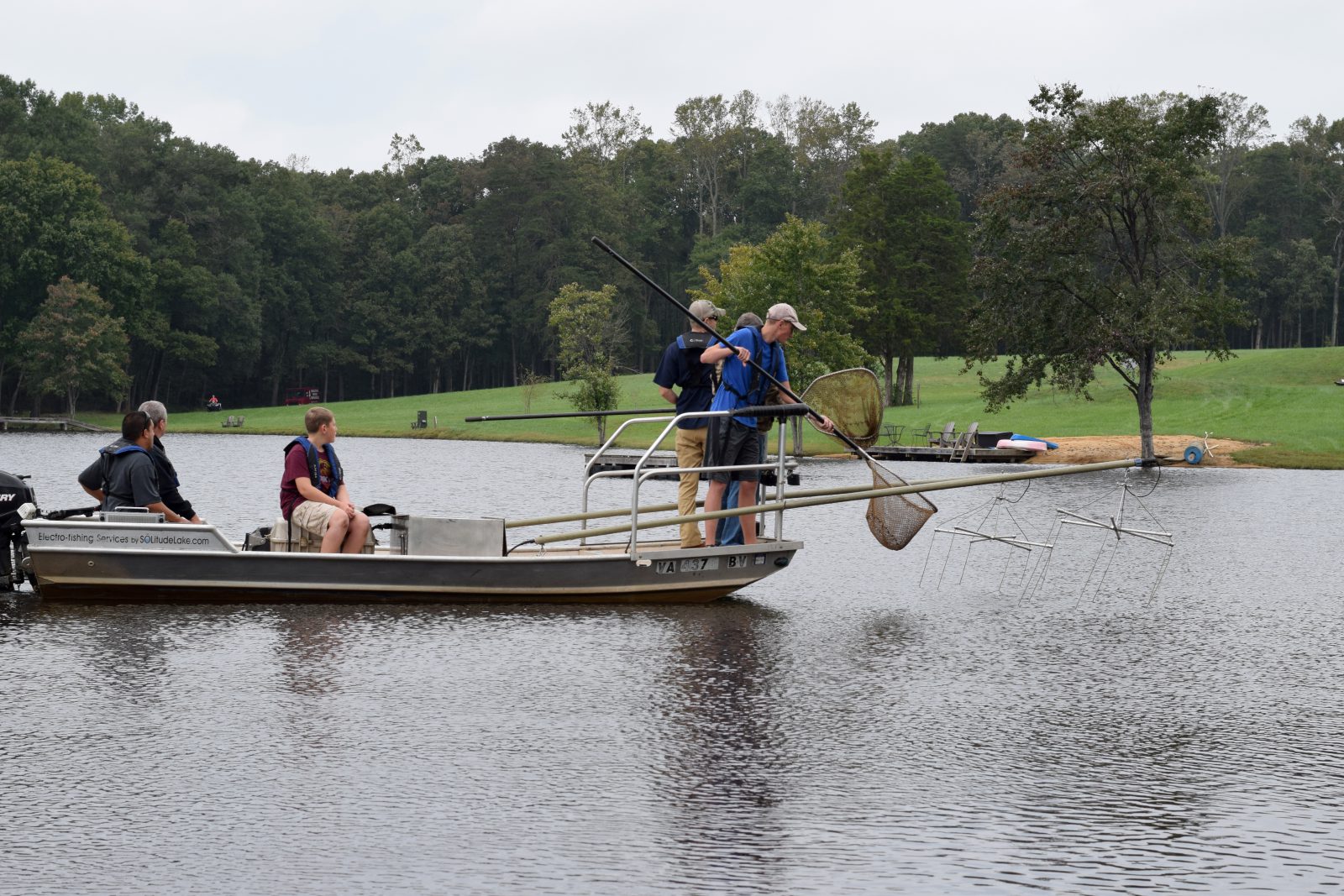
What Exactly Is an Electrofishing Survey and Will It Harm My Fish?
Collecting data on fish populations, which are inherently difficult to directly observe, has always presented a unique challenge to fisheries biologists. To combat this issue, a subset of the fish population is sampled (collected) and used to draw conclusions about the larger population in the water body. Many techniques to accomplish this fish collection have evolved over time with several ancient technologies like nets, weirs, traps, and lines still in use today. More recently, in the mid-20th century, biologists began exploring electrofishing surveys as a viable means to capture fish.
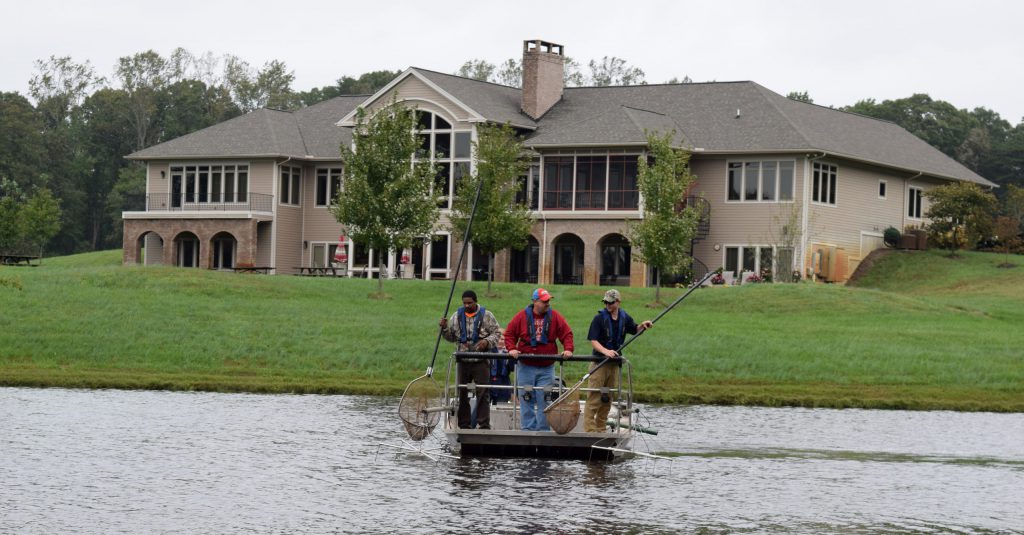
Electrofishing Is A Safe & Effective Way to Collect Data
When performed by a trained professional, electrofishing is a safe and efficient survey method that allows biologists to obtain a complete picture of the fishery and accurately calculate important metrics. This data, evaluated in conjunction with water quality assessments, fish habitat, and stakeholder goals, provides fisheries biologists with the information needed to develop customized fisheries management plans.
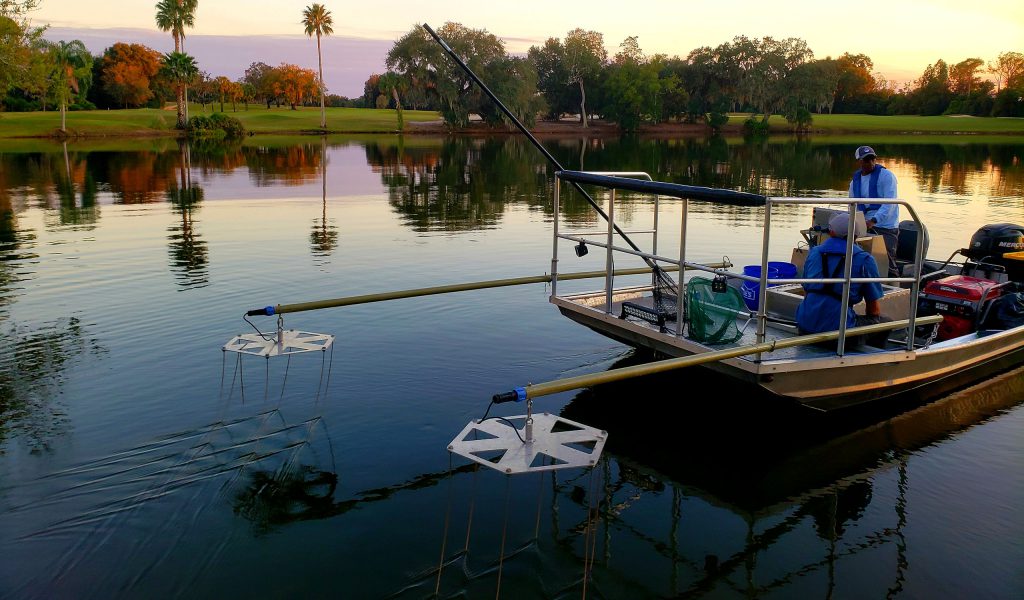
How the Electrofishing Boat Works
Simply put, an electrofishing surveys is the use of an electrical current to capture fish. In most lake or pond applications an electrofishing vessel producing pulsed direct current (DC) is the best option. The vessel has an on-board generator that produces a current which is directed via a control box to terminals called the anode (positive) and cathode (negative). The anode droppers hang from booms at the bow of the boat and the cathode can either be a single insulated dropper or the boat’s hull. Together they deliver voltage and current to the water forming a three-dimensional field affecting a 6-8-foot radius around the anodes. In fresh water, fish generally have a higher conductivity than the surrounding water and become the path of least resistance for the current. When performed carefully and correctly by a trained professional, this process temporarily stuns the fish and allows fisheries biologists to safely collect them.
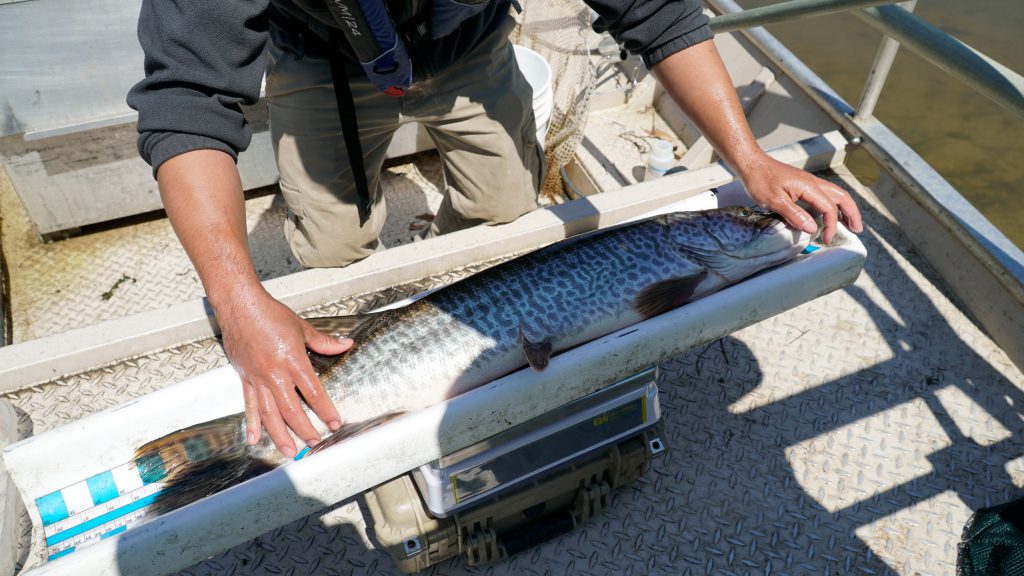
Collecting Fish Data to Make Informed Decisions
After the fish are netted, they are placed in an insulated livewell which keeps them safe from the electrical field until the survey is complete. Once the appropriate amount of fish are collected, data such as weight, length, species and sex can be gathered, in addition to scale or tissue samples. The fish may also be tagged with a unique identifier to provide growth data upon future capture. Does the shocking harm the fish? No. After the necessary species management data have been gathered, the fish are promptly returned to the lake unharmed.
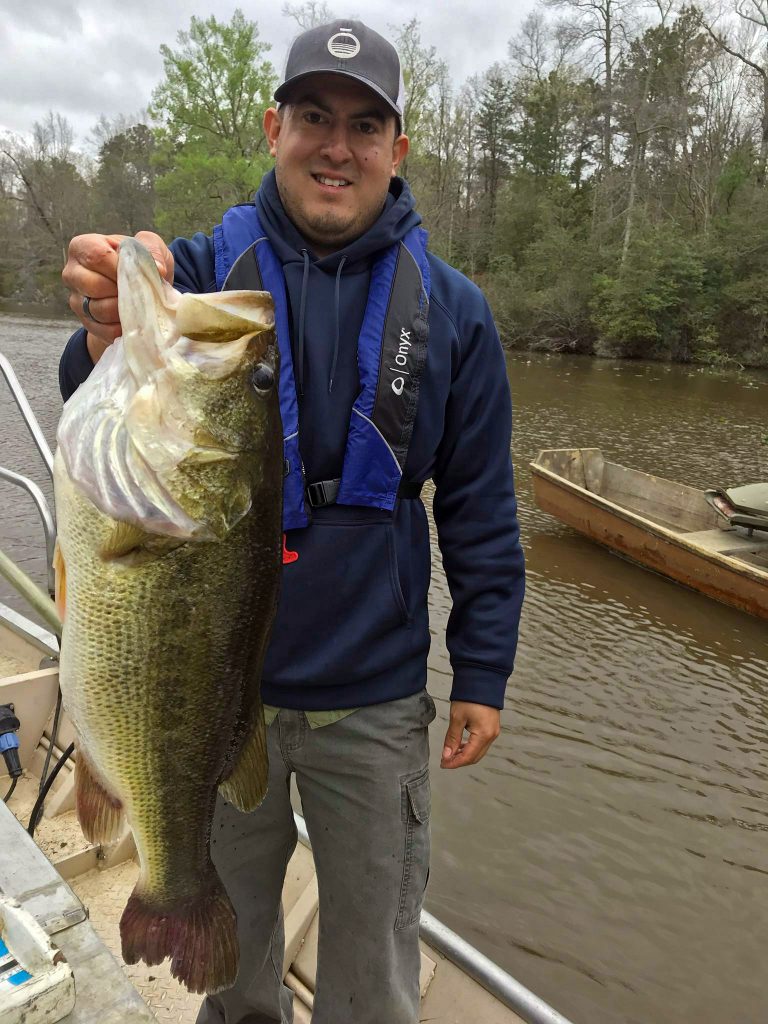
Using Data to Build An Effective Fisheries Management Plan
The data and information provided by an electrofishing survey is the foundation of a successful fisheries management plan. It gives biologists insight into the way a population is responding to the current management regime and establishes knowledge of the system required to make well-informed corrective decisions. This new information paired with knowledge of the habitat, water quality, and stakeholder goals, allows biologists to craft a tailored suite of management techniques to meet the goals for your system. A customized adaptable management plan crafted in this way ensures the best course of action is taken to help you achieve sustainable fisheries success.
DISCLAIMER: When an electrofishing survey is employed, for the safety of the fish and the crew it is imperative that a skilled professional operator is in command of the vessel and the electrical systems. Electrofishing can be dangerous for people and fish alike when carried out by untrained personnel. Since every lake and pond is unique, the precise settings and appropriate outputs will vary and must be accounted for by the operator. While no sampling method is without stress for fish, when properly conducted by trained biologists, electrofishing is one of the most effective and efficient ways to collect fish and will result in minimal stress for the fish.
The Importance of Electrofishing
SOLitude Lake Management is a nationwide environmental firm committed to providing sustainable solutions that improve water quality, enhance beauty, preserve natural resources and reduce our environmental footprint. SOLitude’s team of aquatic resource management professionals specializes in the development and execution of customized lake, stormwater pond, wetland and fisheries management programs that include water quality testing and restoration, nutrient remediation, algae and aquatic weed control, installation and maintenance of fountains and aeration systems, bathymetry, shoreline erosion restoration, mechanical harvesting and hydro-raking, lake vegetation studies, biological assessments, habitat evaluations, and invasive species management. Services and educational resources are available to clients nationwide, including homeowners associations, multi-family and apartment communities, golf courses, commercial developments, ranches, private landowners, reservoirs, recreational and public lakes, municipalities, drinking water authorities, parks, and state and federal agencies. SOLitude Lake Management is a proud member of the Rentokil Steritech family of companies in North America.









